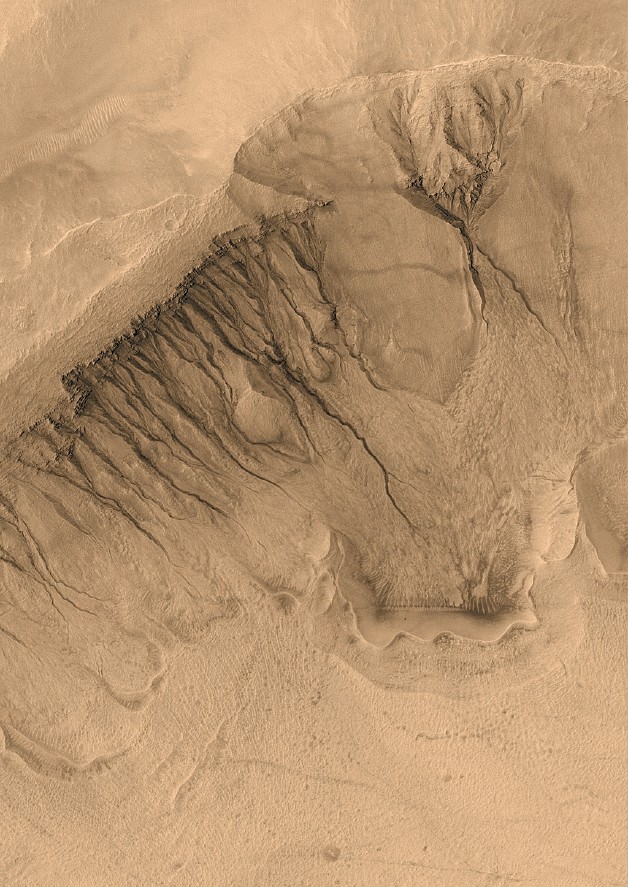The Planet Mars

Left: Gullies in the northern wall of an impact crater in Terra
Sirenum at 39.1°S, 166.1°W. The image is approximately 3 km
across. (Synthetic colour portion of Mars Orbiter Camera image
E11-04033;
NASA/ Malin Space Science Systems).
Research Focus
It is widely believed that early climate of Mars, before about 3.5
billion years ago, would have
needed to be warmer in order to produce certain geological features
that appear to have been eroded by water,
particularly valley
networks and heavily degraded impact craters. But exactly how the
early atmosphere
produced warmer conditions is still an open question.
A key area of research is looking at new geochemical, atmospheric and
geological data from spacecraft to try to determine the evolutionary
history of the geology and atmosphere of Mars [1,2]. This provides the
context for the habitability of Mars.
For the last 3.5 billion years, it is likely that Mars has been cold
and dry so that geologically recent outflow channels and gullies
(above) were probably formed by fluid release mechanisms that have not
depended upon a warm climate. The influence of wind in shaping the
landscape of Mars during this time is another research interest.
References:
[1] D.C. Catling, S. E. Wood, C. Leovy, D. R. Montgomery, H. Greenberg, C. R. Glein, J. M. Moore, Light-toned layered deposits in Juventae Chasma, Mars, Icarus, 181, 26-51, 2006.
[2] G. M. Marion, D. C. Catling , and J. S. Kargel, Modeling aqueous ferrous iron chemistry at low temperatures with application to Mars, Geochem. Cosmochem. Acta, 67, 4251-4266, 2003.